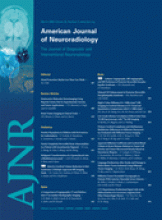The problem with evidence is that it doesn’t always agree with your facts.
—Stephen Colbert
Distal protection devices appear seductively simple, elegant, and beneficial to both physicians and patients. Why would you not want to use something called “distal protection?” To not use “distal protection” during carotid angioplasty and stent placement (CAS) sounds irresponsible, like not practicing “safe sex.” In a simple world, distal protection devices would do exactly what their name implies, that is, eliminate complications of CAS that are caused by distal emboli. But we do not live in such a simple world.
Every medical device has both benefits and risks. To properly characterize the risk-benefit profile of a device, controlled studies are needed, comparing patients treated with the device to patients not treated with the device. That sounds like simple, high school science. But no such study exists. Instead we have retrospective data comparing patients treated before and treated after the introduction of distal protection devices, such as the article in this issue of American Journal of Neuroradiology by Kastrup et al.1 These authors report that the proportion of patients with new ipsilateral diffusion-weighted imaging (DWI) lesions was significantly lower (52% versus 65%) after protected versus after unprotected CAS. This amounts to a 25% relative reduction in the risk of emboli causing such DWI lesions.
The Carotid Revascularization Endarterectomy versus Stent Trial (CREST) lead-in phase also included some patients treated before the introduction of distal protection. Retrospective analysis of the lead-in phase of the CREST showed a 4.9% 30-day risk of stroke without distal protection (n = 81) versus 3.6% with distal protection (n = 332; P = .58).2 In the ACCULINK for Revascularization of Carotids in High-Risk Patients (ARCHeR) 1 registry, CAS was performed without distal protection, and there was a 1.9% incidence of fatal and major stroke at 30 days (n = 158) compared with 1.4% in the ARCHeR 2 and ARCHeR 3 registries (n = 423), in which CAS was performed with distal protection (P = .71).3 The pro-CAS registry found a risk of permanent neurologic deficit with CAS of 2.1% without distal protection (n = 923) and 1.7% with distal protection (n = 1609; P = .54).4 If we ignore for a moment that these differences do not reach statistical significance, the data might suggest that distal protection might reduce the risk of stroke by approximately 25%, which is quite similar to the degree of reduction in incidence of silent ischemic lesions reported by Kastrup et al.1 So perhaps distal protection can eliminate approximately 25% of the strokes complicating CAS, but despite distal protection, ischemic stroke remains the predominant complication of this procedure. It is also worth noting that cases without distal protection in these reports were done at an earlier time than cases with distal protection, so the operators had less experience when doing the cases without distal protection, and this lesser degree of experience might significantly bias the outcomes toward a higher incidence of strokes.
Let us continue to ignore the lack of statistical significance and again assume that there really is a 25% reduction in clinically apparent ischemic strokes in CAS performed with distal protection. Then what about the 75% of ischemic events during CAS that are not prevented by distal protection? Maybe they are caused by emboli that escape the distal protection device, but it is hard to believe that these devices have only a 25% capture efficiency. Perhaps a more likely explanation may be that these ischemic events are caused by thromboemboli formed on the devices themselves or that embolize distally only after removal of the distal protection device. Perhaps the best distal protection could be provided by developing a better pharmacologic regimen to prevent formation of these thromboemboli.
So why don’t we have prospective, randomized, controlled studies for distal protection devices? The medical device industry has never had interest in performing such a study. Why would the device industry want to fund a study that might bring into question the value of a device that they would like to sell for almost $2000 each? They would only perform such a study if the US Food and Drug Administration (FDA) required them to do so before approval for marketing. Apparently, the FDA has bought into the concept of distal protection as an integral part of CAS, so no such testing will ever be required. I do not want to put all of the responsibility for a lack of evidence on the medical device industry. Physicians have been worried about distal emboli ever since they started thinking about the potential use of angioplasty and stent placement in the cerebral circulation, and we were quick to adopt the technology. Although we had no compelling evidence of efficacy for these devices, they were enticing to adopt, because they undoubtedly make both the physician and the patient feel safe on a theoretic basis. A published “consensus of opinion leaders” in 2001 stated that “because embolic particles are universally generated by the procedure, all agreed that some method to intercept these particles must be used.”5 Writers of such statements are often short on data and long on financial conflicts of interest, so the value of such a statement is not clear. It is quite easy to find glowing reports of the wonders of distal protection, but it is rather difficult to find thoughtful, objective assessments of this technology that consider the possibility that these devices are rather ineffective.
Medicare, for reasons that I do not fully understand, will not reimburse for carotid stent placement performed without distal protection. Perhaps they are following the “consensus of opinion leaders.” This policy can be a problem in practice, because distal protection devices, as they currently exist, sometimes cannot be deployed across a stenosis. What should we do for a patient with symptomatic, severe carotid stenosis who is clearly at bad surgical risk for carotid endarterectomy because of neck radiation or some other reason, yet has anatomy unfavorable for use of a distal protection device? In such a case, CAS without distal protection might very well be a safer option than carotid endarterectomy.
The small amount of evidence that distal protection devices offer some level of protection from ischemic stroke might make it seem unethical to perform a trial randomly assigning patients to undergo CAS with or without distal protection. The window of time to perform such a study has probably passed. One could certainly make a rational argument that there are enough flaws in the existing data to warrant a prospective randomized trial, but I doubt that enough physicians would buy into this idea and, thus, make such a trial realistic. Maybe a hint of a 25% relative risk reduction is all we’re ever going to get for data regarding the overall benefit of distal protection. We still have no idea whether one of the many distal protection devices might offer more benefit or less risk than others. As Kastrup et al1 have pointed out, some subgroups of patients may accrue little or no benefit from distal protection devices. There is cause for concern that distal protection devices for CAS are not as fabulous as the hype would suggest, and studies are not being designed to objectively evaluate the risks and benefits of these devices (individually or as a whole), nor are systematic, prospective evaluations evaluating these devices in various patient subgroups likely to occur in the current research environment. Kastrup et al1 are to be commended for advancing our knowledge and drawing our attention to this important topic.
- Copyright © American Society of Neuroradiology







